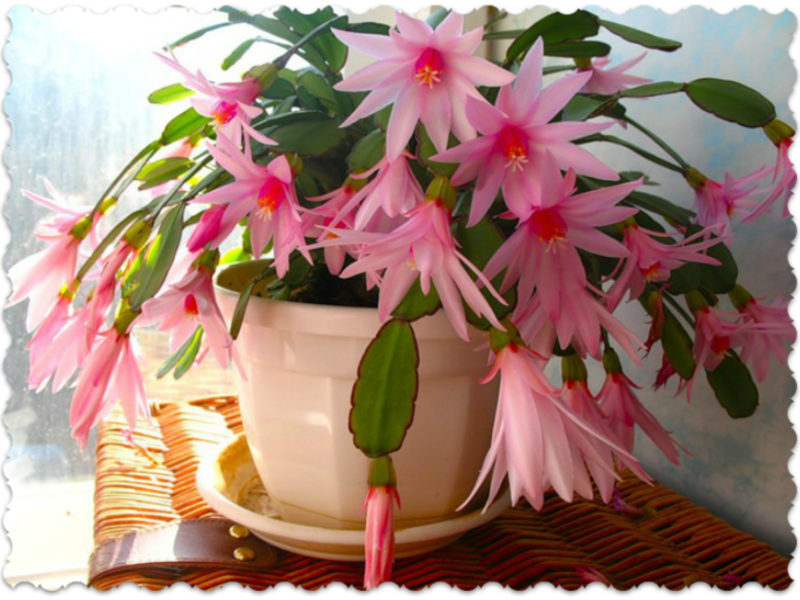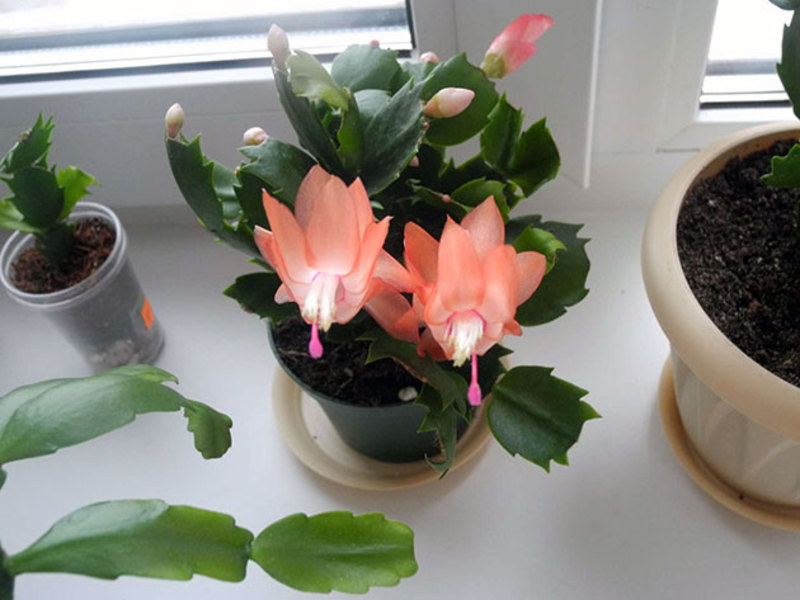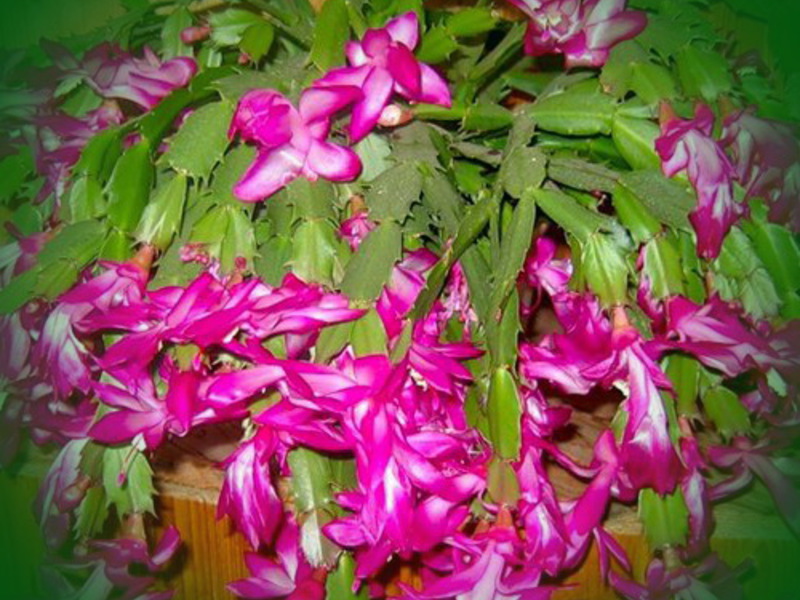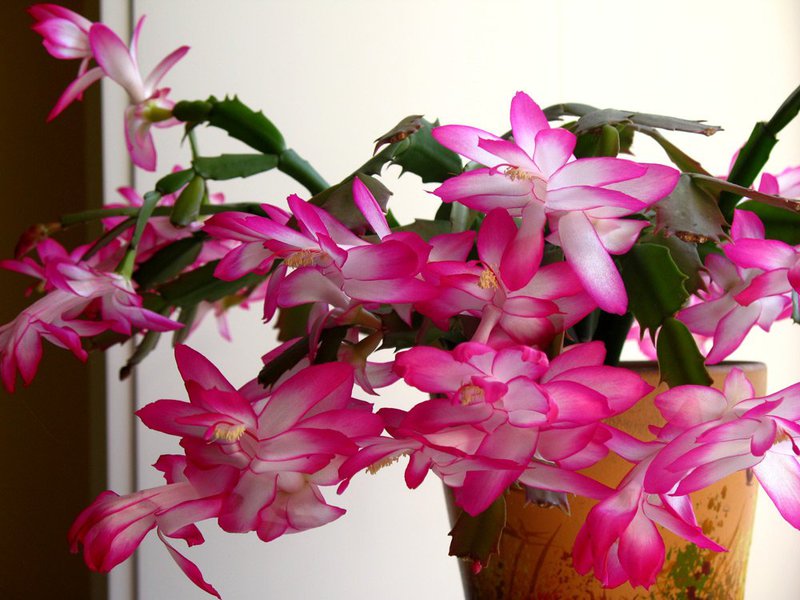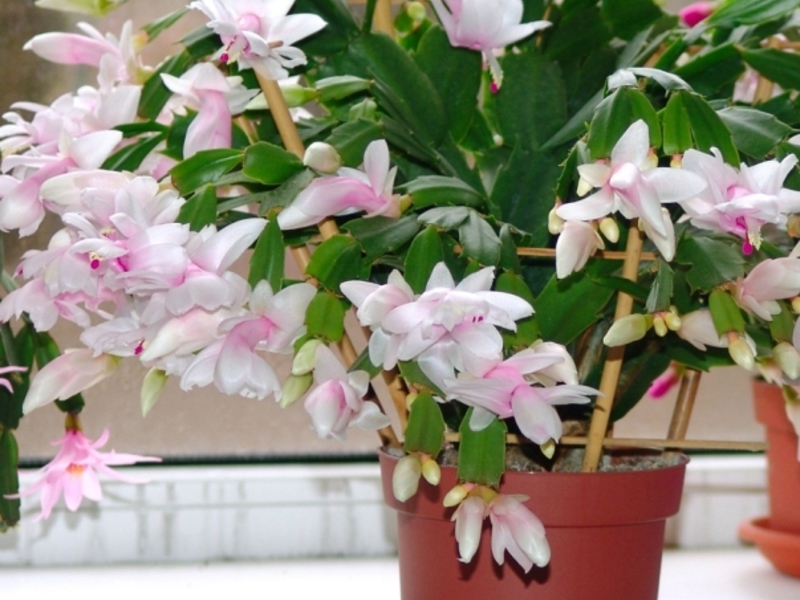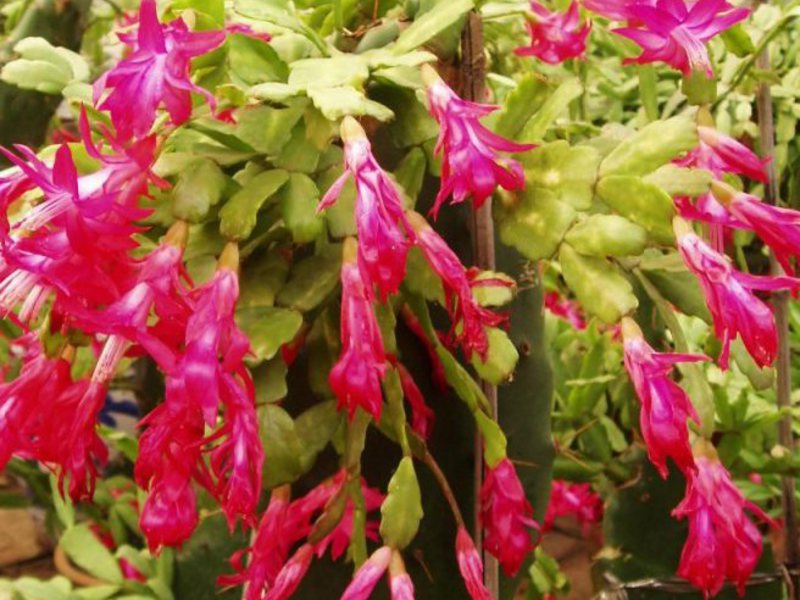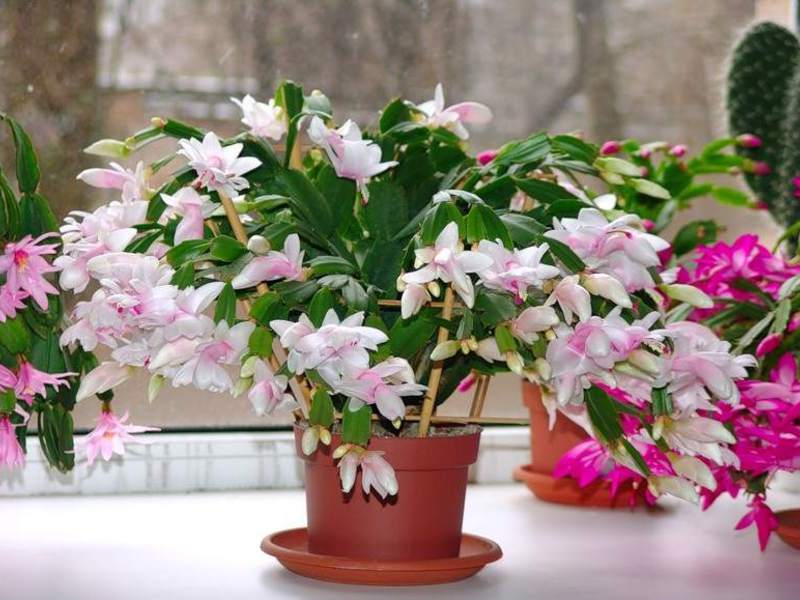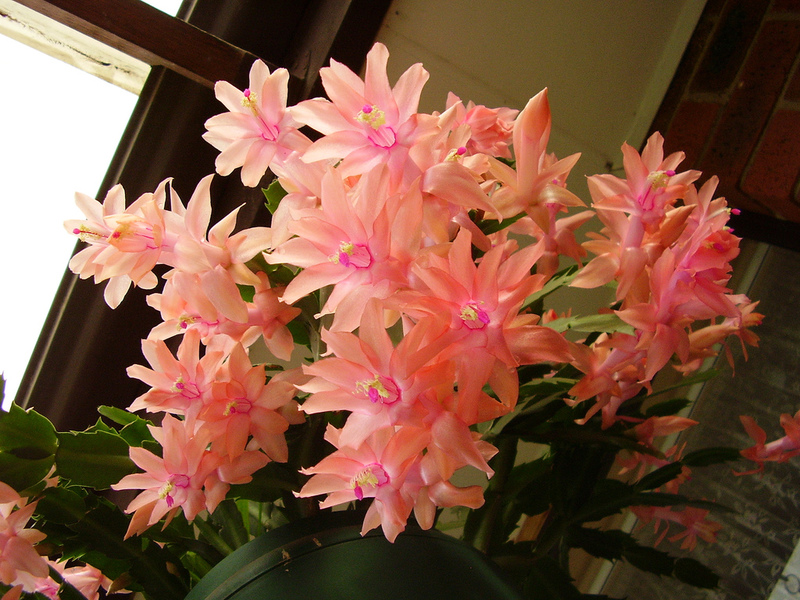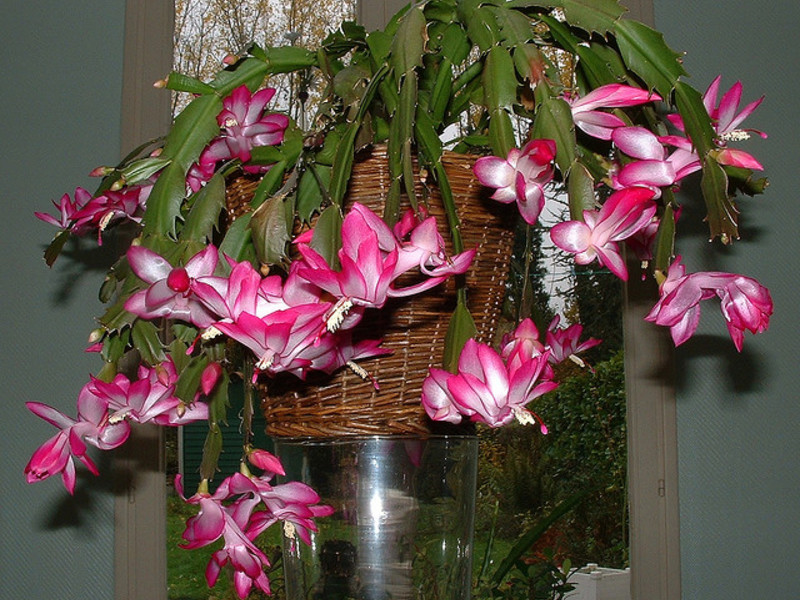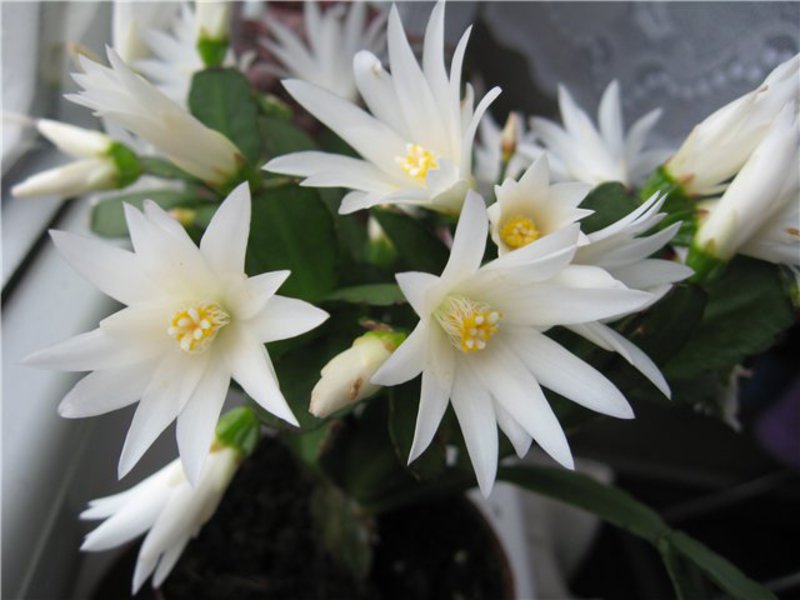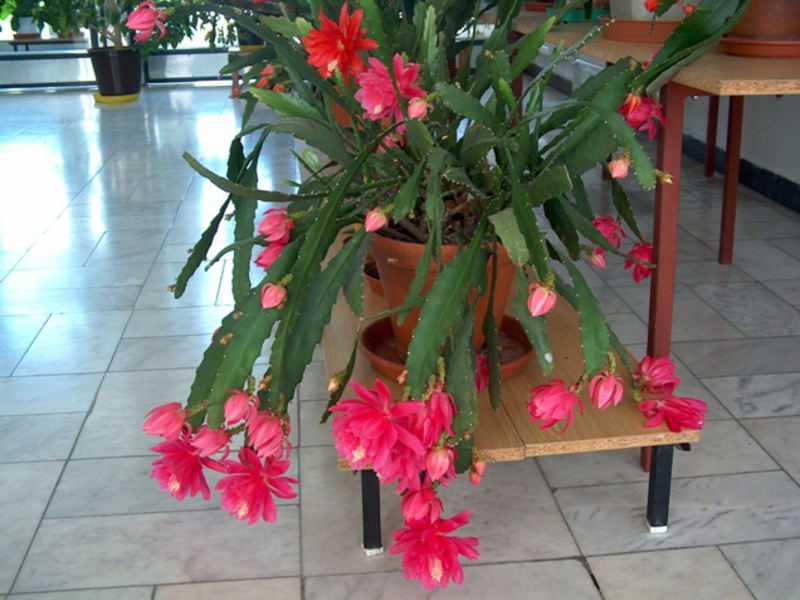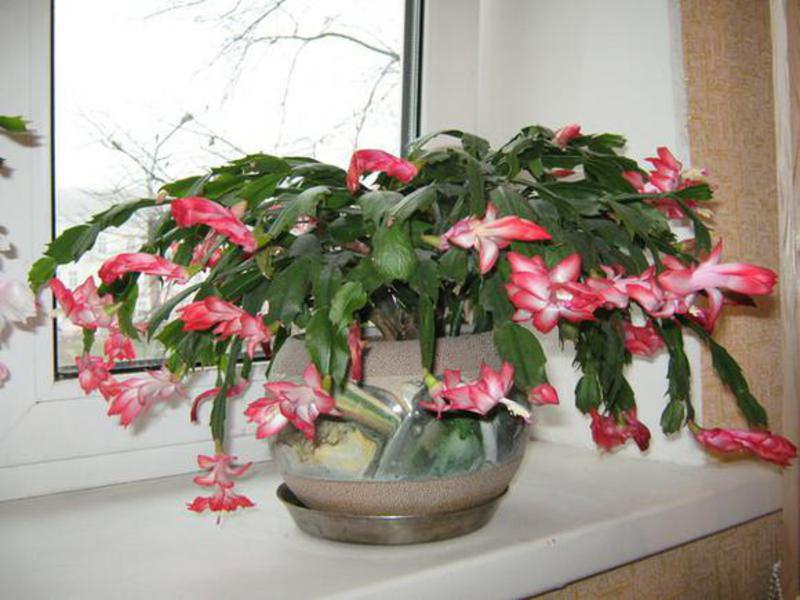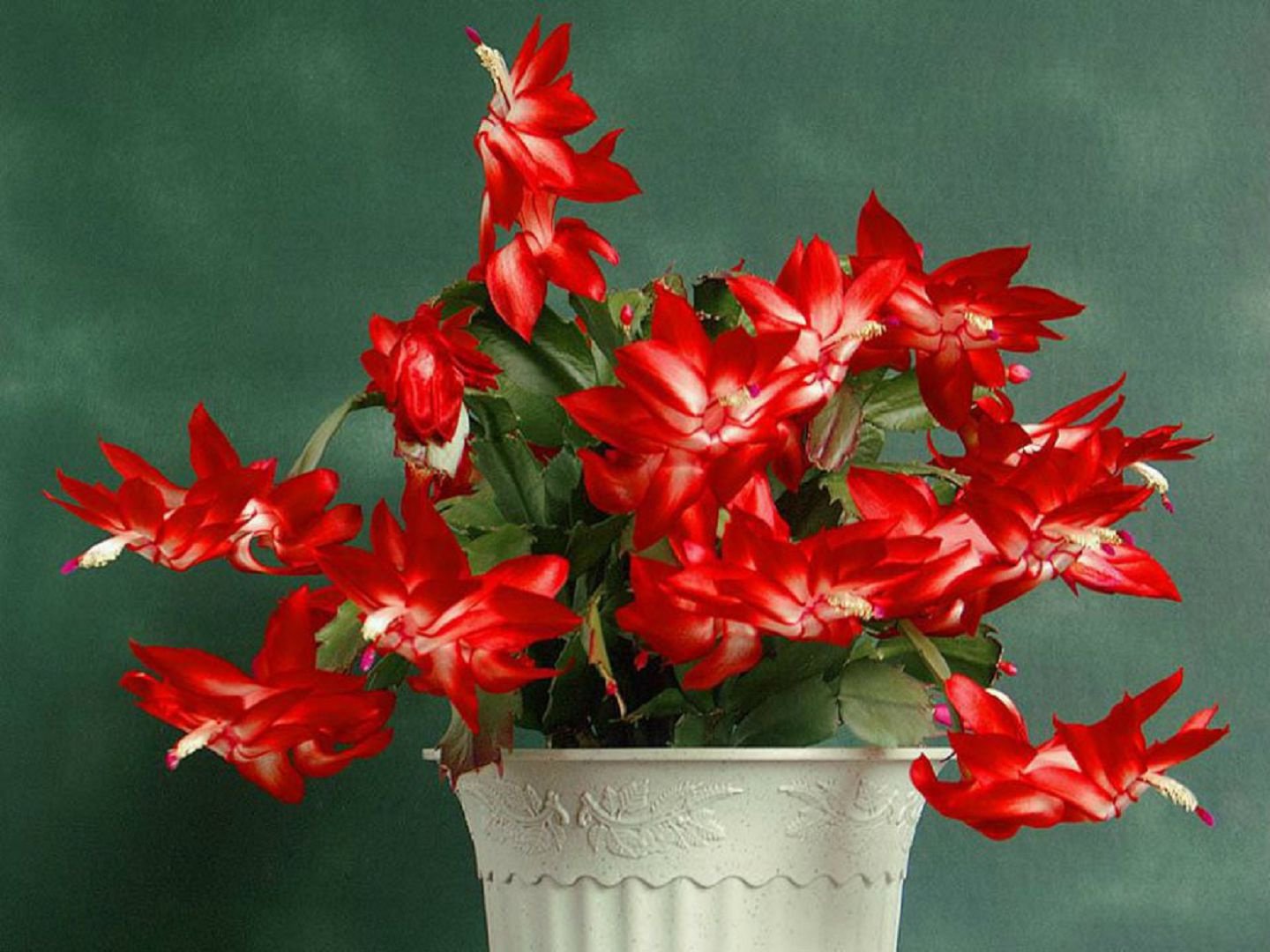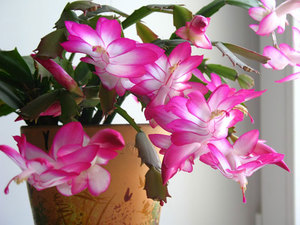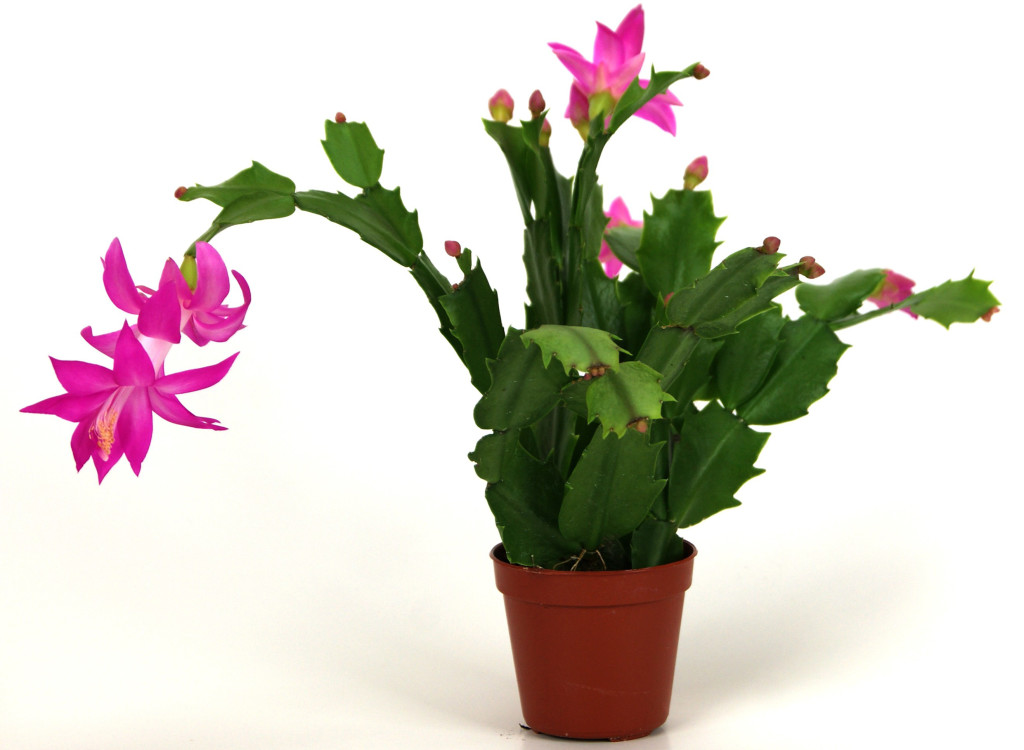The beautiful Decembrist flower decorates houses and apartments with its flowers in the winter season. They call it differently - Rozhdestvennik, Zygokaktus, Schlumberger or Varvarin's color. The plant belongs to the epiphytic cacti that grow naturally on trees in the tropical forests of South and Central America. Putting its roots down the bark, it feeds and accumulates humus. At home, the Decembrist is unpretentious, but reproduces in a special way. Therefore, for the successful cultivation of zygocactus, it is simply necessary to know the rules for its reproduction.
Content
Description, varieties and photos of the Decembrist flower
The plant is a bush with branched stems up to 30-40 cm long... Each stem consists of small leaf-like segments (segments) with projections along the edges. The root system of the flower is weak and dies quickly. But when creating favorable conditions for it, it also quickly recovers from special search roots. Decembrists are endowed with aerial roots that capture moisture directly from the air.
Zygocactus blooms with multi-tiered long-tubular flowers that appear on the tops of the shoots from the segments. Each flower is endowed with a bunch of long, effectively hanging stamens. In nature, the Decembrists bloom with white and red flowers. But breeders have bred numerous varieties with raspberry, purple, yellow, white, pink shades.
Types of Decembrists - photo
Thanks to the work of breeders, zygocactus are represented by several types:
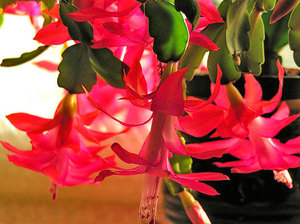 Decembrist Gertner is a rather large plant with fleshy, dense segments up to 7 cm long. Large multi-tiered flowers consist of elongated, pointed petals and long hanging pistils. Their color depends on the variety.
Decembrist Gertner is a rather large plant with fleshy, dense segments up to 7 cm long. Large multi-tiered flowers consist of elongated, pointed petals and long hanging pistils. Their color depends on the variety.- Zygocactus Russeliana is a plant with drooping branches up to 80 cm long. Fleshy, flat segments are dark green in color and resemble a small leaf. Each segment is distinguished by corrugated edges and veins. Large tubular flowers consist of tiers of pointed petals and hanging pistils.
- Decembrist Buklei up to 50 cm high is distinguished by dense, glossy, dark green segments resembling leaves. They have sharp teeth along the edges. Multi-tiered tubular flowers up to 8 cm long consist of petals pointed at the edges. Their color depends on the variety and can be purple, yellow, white. Flowers bloom in November and can bloom until March.
- Truncated zygocactus is a tall plant with large light green stems. At the ends of the shoots, large flowers of red, purple, pink, white or other tones are formed. After flowering, fruits in the form of red berries are formed on the segments.
How does the Decembrist breed?
Zygocactus propagates by cuttings, each of which should consist of two to three segments.Regardless of the season, they take root well. But the ideal time for the reproduction of the Decembrist is when the plant has already bloomed. This usually happens in April or May.
Preparing cuttings
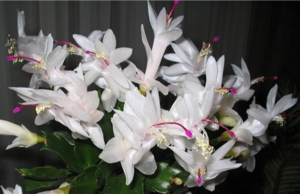 Each adult plant should have segments with small roots. To get a lush bush, you need several of them. It is recommended to separate the segments from the most lush part of the plant, because after pinching the Decembrist will begin to rejuvenate, release new shoots and bloom more luxuriantly.
Each adult plant should have segments with small roots. To get a lush bush, you need several of them. It is recommended to separate the segments from the most lush part of the plant, because after pinching the Decembrist will begin to rejuvenate, release new shoots and bloom more luxuriantly.
It is recommended to separate the petioles from the shoots by hand. To do this, the intended stalk of two or three extreme segments with the help of fingers is rotated along the axis and pinched off from escape... The stem of the bush at this time must be supported with the other hand. Cuttings are separated easily and quickly without any problems.
The segments are not planted in the ground immediately. They need to be dried for several days. For this, the cuttings are placed in a container, which it is desirable to expose to the open air. They can be sprinkled with charcoal or sand. As soon as the cut of the segments is covered with a glassy film, they can be planted.
Soil preparation
It is recommended to plant zygocactus in soils saturated with peat. A special substrate with an acidity of 5.5-6.5 pH can be purchased at the store or prepared by yourself. The earthen mixture should be of the following composition:
- humus earth - 4 parts;
- sod land - 1 part;
- leaf land - 6 parts;
- peat - 2 parts;
- sand - 2 parts.
Such soil will turn out to be breathable and light.
Pots for rooting Decembrist cuttings should not be very large, since the root system of the plant is poorly developed. One third of the containers are filled with drainage, which is covered with soil. The soil is slightly crushed, moistened and the cuttings do not go deep into it.
You can plant the Decembrist first in a disposable container or directly into a permanent pot. To create a lush, beautiful bush, several cuttings are planted in one container at once.
The planted segments are covered with plastic wrap or glass containers. The pots are removed in the shade in a room with an air temperature of 15-20 degrees. During rooting, the soil should be moderately moistened.
After root formation, the plant is transplanted from a temporary container into a permanent pot of suitable size. Zygocactus can bloom in the same year, despite the fact that the bush will consist of only a few segments.
Basic rules of care
You can grow a healthy and beautiful plant by creating favorable conditions for it and providing it with proper care.
Lighting and humidity
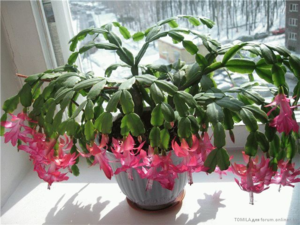 Unlike many succulents, zygocactus are in direct sunlight, temperature drops and dry air do not like... In winter, a flowering plant can be placed on the southern windowsill, and in spring and summer, the Decembrist will feel good about the northern and eastern windows.
Unlike many succulents, zygocactus are in direct sunlight, temperature drops and dry air do not like... In winter, a flowering plant can be placed on the southern windowsill, and in spring and summer, the Decembrist will feel good about the northern and eastern windows.
In order for the bush to grow evenly, it is periodically recommended to turn it to the light in different directions. At the same time, a plant that is blooming and gaining buds cannot be turned and moved from place to place, since the flowers will immediately fall off.
Decembrists love humid air, therefore, in the hot season or in rooms with radiators turned on, it is recommended to spray them daily and bathe them in the shower from time to time. Potted earth pre-covered with a film... The air humidity around the flower can be increased by using side-by-side pallets of wet pebbles.
Too dry air can lead to dropping of buds, so in winter zygocactus are sprayed more often. However, this must be done so that water does not fall on the flowers.
Watering and feeding the Decembrists
Flowering zygocactus should be watered sparingly, but so that the soil in the pot is always moist.During the dormant period, watering is reduced, and the plant is watered only after the soil in the pot becomes dry. In the fall, the Decembrist preparing for flowering should be kept in cool conditions and rarely watered. Watering is carried out with settled water at room temperature.
The Decembrist is fed in the spring once a month with floral mineral fertilizers for cacti. It is necessary to ensure that the nitrogen content in them is small, since this element in succulents can cause decay of roots... In the summer, the plants are fed every fifteen days, and in the fall, no fertilization is applied at all.
Temperature regime
The Decembrist is completely undemanding to temperature. It can grow at temperatures of +37 degrees, and at + 2C. However, it is better not to create such stressful conditions for the plant.
In order for the zygocactus to bloom magnificently, it is necessary to stimulate the laying of buds, creating a period of rest for this:
- In autumn, when the air temperature in the room is above + 23C, the buds will not form. The plant should be kept in cool rooms with a temperature of + 12- + 16C.
- In the active phase of flowering, the Decembrist needs a temperature from + 18C to + 20C.
- As soon as the bush fades, it is again placed in a cool place.
Protection of the Decembrists from diseases and pests
Zygocactus resistant to various diseases, and are practically not susceptible to insect attacks. However, they can be attacked by pests from neighboring plants:
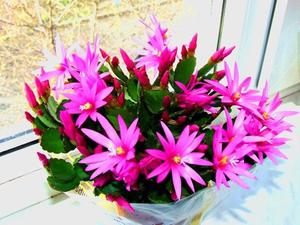 The mealybug appears between the shoots and looks like cotton-like lumps. Pests are removed with a cotton swab soaked in alcohol or washed off with a stream of hot water.
The mealybug appears between the shoots and looks like cotton-like lumps. Pests are removed with a cotton swab soaked in alcohol or washed off with a stream of hot water.- The spider mite infects plants kept in rooms with dry air. A cobweb and tiny, red dots appear on the segments. Pests feed on plant sap, which is why, after a while, the segments begin to fall off. You can fight with folk remedies, using infusions of garlic and onions, and washing the plant with tar soap.
Fungal diseases are very dangerous for the Decembrist: late blight, phytium, fusarose... The plant becomes infected with them through the soil or wound. The bush can also get sick with mistakes in care, which include excessive watering, wintering at too low temperatures, and lack of drainage in the pot.
It is very difficult to treat such diseases. For this, the bush is sprayed with "Oxyhom", "Hom", "Fundazol" or "Fitosporin-M". If the branches of the zygocactus began to wither, and the segments fall off, then it is recommended to pull the plant out of the pot and examine its roots. If they are slightly damaged, the rotten parts can be simply removed by treating the sections with crushed activated carbon. If the aerial part is severely affected, and most of the roots have died, it is recommended to cut the cuttings above the infection site and root them. The diseased plant is thrown away.
With proper reproduction and good care, Decembrists can grow up to 20 years... With age, their trunks twitch and lose their decorative effect. But long and profuse bloom in the winter months covers up these flower imperfections. You can grow zygocactus on windowsills in pots, or in hanging pots, as an ampelous form.
